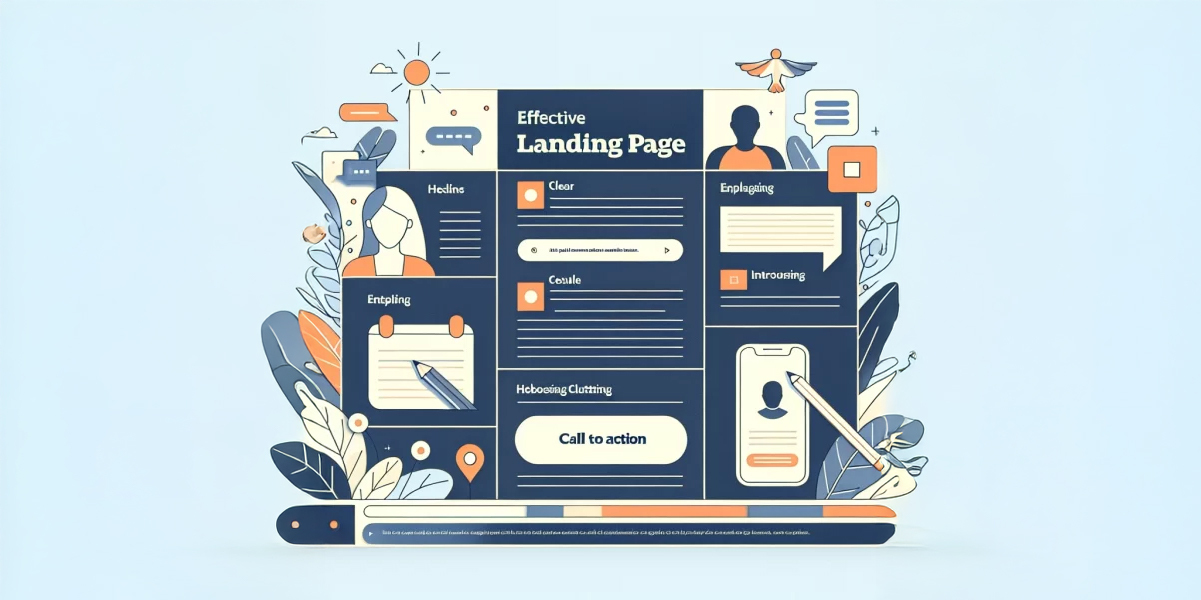Creating an engaging and effective landing page is crucial for any online business looking to convert visitors into customers. A well-designed landing page can significantly increase the success of your marketing campaigns by focusing the visitor’s attention and guiding them towards a specific action. In this post, we will explore the key elements that contribute to designing an effective landing page, along with tips to optimize its performance.
What is a Landing Page?
A landing page is a standalone web page designed with a single focused objective – typically known as a call to action (CTA). Unlike standard web pages, which often encourage exploration of various elements on your site, landing pages narrow down the purpose to facilitate conversions. These can be anything from signing up for a newsletter, downloading an e-book, registering for a webinar, or making a purchase.
Key Elements of an Effective Landing Page
1. Clear and Compelling Headline
The first thing visitors will see is the headline, making it one of the most critical elements of your landing page. It needs to grab attention immediately and convey the value proposition at a glance. Focus on clarity and brevity, ensuring that it reflects the essence of what you are offering.
2. Subheading for Support
Next, a supportive subheading can reinforce the main headline by elaborating on the value proposition. Use this space to explain what visitors will gain and how your offer addresses their needs or pain points.
3. Engaging Visuals
Visual elements, such as images, videos, or infographics, can enhance the appeal of your landing page. Use high-quality visuals that complement your content and create an emotional connection with the visitor. A well-placed hero image or video can effectively convey and illustrate your message.
4. Focused and Concise Copy
The written content on your landing page should be direct, engaging, and focused on the benefits of your offering. Avoid overwhelming visitors with too much information; instead, use bullet points or short paragraphs to summarize the main points. Highlight how your product or service stands out and meets the needs of your target audience.
5. Strong Call to Action (CTA)
Your CTA is arguably the most essential feature of your landing page. It should be clear, compelling, and easily noticeable. Use action-oriented language that encourages visitors to take the next step, whether it’s to “Sign Up Now,” “Get Your Free Trial,” or “Download the E-Book.”
Ensure that the CTA button stands out visually, using a contrasting color and making it larger than other buttons on the page.
6. Trust Signals and Testimonials
Incorporating trust signals helps to build credibility and alleviate any hesitations visitors might have. Consider adding testimonials, case studies, or user reviews that showcase the positive experiences of previous customers. Logos of recognizable brands you’ve worked with or any industry certifications can also serve to bolster trust.
7. Minimal Distractions
To maximize conversion rates, remove any unnecessary distractions on your landing page. This means limiting navigation links, excessive text, or unrelated content that could lead visitors away from the desired action. The goal is to keep the visitor’s focus solely on the CTA.
8. Optimize for Mobile
With an increasing number of users accessing websites via mobile devices, it’s imperative that your landing page is mobile-optimized. Ensure that the layout is responsive, the text is legible, and the CTA is easy to access. A seamless mobile experience can significantly enhance your conversion rates.
9. A/B Testing
Once your landing page is live, don’t just set it and forget it. Conduct A/B testing to evaluate different versions of your landing page. This could involve tweaking the headline, CTA, colors, or images to see which variations lead to higher conversion rates. Use analytics to track performance and make data-driven decisions for improvement.
Conclusion
Crafting an effective landing page is an ongoing process of testing, revising, and optimizing. By implementing the key elements outlined above, you’ll be well on your way to creating a landing page that not only attracts attention but also converts visitors into loyal customers. Remember the importance of understanding your audience and tailoring your content to meet their needs. With a sharp focus on clarity, visuals, and strong CTAs, your landing page can become a powerful tool in your marketing arsenal.



